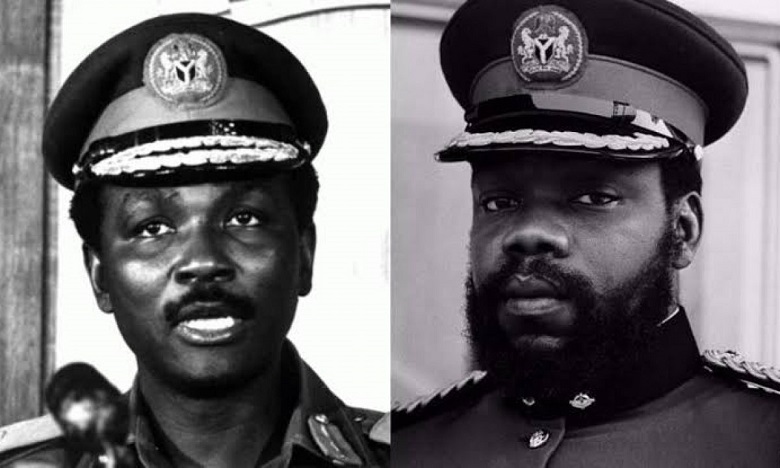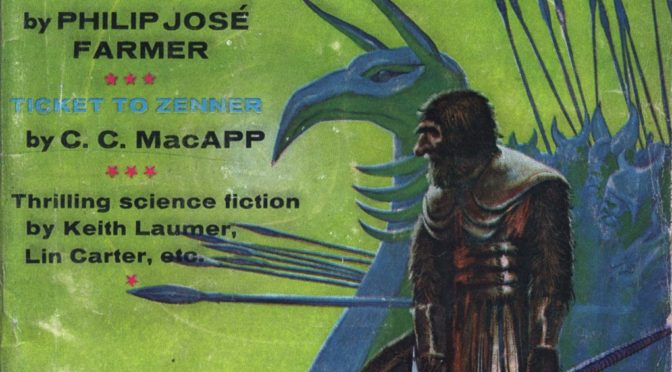
by David Levinson
Persecution and division
It’s rarely discussed, but a major condition of the decolonization of Africa has been that the newly independent nations are expected to retain their old colonial boundaries. The stated reason is to prevent squabbling and even armed conflict over redrawing those boundaries, such as we’ve seen between Pakistan and India. It sounds good on paper; unfortunately, paper is where those boundaries were drawn, often with little regard for people living there and leaving major tribes and ethnic groups split by lines on a map. Add in the tendency of colonial administrations to favor one tribe over others and you have the basis for a lot of unrest.

Nigeria is proving to be a case in point. Economic problems, tensions between the Muslim north and Christian south, government corruption, and an election widely seen as fraudulent all came to a head in an attempted military coup at the beginning of last year. Although the coup failed, the military was left in charge, and military governors were placed in the four states. An attempt to create a more centralized government led to a counter-coup and the near dissolution of Nigeria. Under Western pressure, the new head of the government, Colonel Yakubu Gowon, restored the federal system.
Then pogroms in the north against the Igbo (a largely Christian tribe from Eastern Nigeria) and other eastern groups left as many as 30,000 dead and over a million refugees fled to the east. The strain on the east led to negotiations between Colonel Gowon and Eastern military governor Colonel Chukwuemeka Odumegwu Ojukwu seemed promising, but have fallen apart. On May 27th, Gowon declared that Nigeria would be divided into 12 states (cutting the Igbo off from oil money). The same day Colonel Ojukwu declared the independence of Eastern Nigeria. As we go to press, it has been announced that the new country will be called the Republic of Biafra. Nigeria is unlikely to accept this assertion of independence.
 l.: Colonel Yakubu Gowon of Nigeria. r.: Colonel Odumegwu Ojukwu of Biafra.
l.: Colonel Yakubu Gowon of Nigeria. r.: Colonel Odumegwu Ojukwu of Biafra.
Mediocrity strikes again
Similarly unstable is this month’s IF, full of shaky partnerships, from famous authors and vikings to complicated family politics. Some expect betrayal, others will find themselves surprised.
 Joe Miller is the most fearsome warrior these vikings have ever seen. Art by Gaughan
Joe Miller is the most fearsome warrior these vikings have ever seen. Art by Gaughan
The Felled Star (Part 1 of 2), by Philip José Farmer
Twenty years ago, everyone who ever lived and reached the age of five or so awoke on the Riverworld, brought back to life by someone for mysterious purposes. Samuel Clemens (better known to the world as Mark Twain) is traveling with a band of vikings led by Eric Bloodaxe. Also along is Sam’s best friend, Joe Miller, a “titanthrop” or ape-man with a nose like a proboscis monkey. They’re seeking a source of iron, which is almost non-existent. Bloodaxe carries an iron axe, most likely from meteoric iron, but he wants more for the power it will bring. Sam wants to build a steamboat (and find his beloved wife Livy). They also hope to reach the headwaters of the River, which Joe once visited and saw a mist-shrouded tower and flying boats.
The group is attacked by a settlement of 19th century Germans, equipped with gliders and bombs. The fall of a huge meteor several valleys away smashes everything with a massive wave, but the viking boat manages to ride out the destruction. They fish Lothar von Richthofen (the younger brother of the Red Baron) out of the wreckage, and he gladly joins their quest.
 Curse you, Red Baron’s little brother! Art by Gaughan
Curse you, Red Baron’s little brother! Art by Gaughan
This brief installment is largely set-up. Mostly, we get everyone’s motivations and witness a possible source of a lot of iron. The most interesting bit here is Joe Miller. His tale of the tower is very well done. The implication that this distant relative of Homo sapiens counts as human for whoever is behind the great resurrection also raises some fascinating questions. We’ll see what Farmer manages to do with all this.
Three stars.
Pelandra’s Husbands, by E. A. Walton
Pelandra is destined to become an immortal and marry the immortal leader of an expedition to a planet circling another star. Along the way, she is expected to marry a series of men selected for their compatibility as spare parts for the immortals. Unfortunately, she has fallen in love with husband Number Three, and he is scheduled for recycling very soon.
Walton is a British fan, making her first professional sale. Very little makes any sense. The whole situation is contrived just to create the problem and obvious ending.
Two stars.
Population Implosion, by Andrew J. Offutt
The oldest people are dropping dead for no apparent reason, and what constitutes oldest is getting younger every day. It turns out that the death rate now corresponds exactly with the birth rate. International efforts try to reduce the birth rate, but somebody’s cheating.
 Bob Hope and (presumably) Bing Crosby starring in The Road to Armageddon. Art by Vaughn Bodé
Bob Hope and (presumably) Bing Crosby starring in The Road to Armageddon. Art by Vaughn Bodé
Another story that makes no sense and has more holes than all the cheese in Switzerland. It’s an interesting “what if?”, but Offutt doesn’t do anything with it.
Two stars.
A Ticket to Zenner, by C. C. MacApp
Tom Larrow has worked on the planet Merob for several years, but a revolution means that all non-Merobans must leave. He was attacked and had his passport and ticket for Earth stolen. Lucky for him, since the ship blew up just as it entered space. His assailant also kindly left behind another passport and a ticket to Zenner. With the help of his employer, Tom gets away with a ring of little value and the name of a contact, but someone is still hunting for him.
 Tom tries to smuggle himself off the starship. Art by Virgil Finlay
Tom tries to smuggle himself off the starship. Art by Virgil Finlay
When he’s not writing about Gree or trying to be funny, MacApp is a decent writer. Somebody like Keith Laumer might have made this story (which owes more than a little to North by Northwest) a bit more exciting and tied things up a bit better, but MacApp’s rendition is serviceable.
Three stars.
The Tusk, by L. Sprague de Camp
A very short poem musing on a mammoth tusk in a museum.
 Art by Gaughan
Art by Gaughan
I have a poor sense of meter, but the rhythm here feels jarring and inconsistent. The punchline is also facile at best. Not Sprague’s best work.
Two stars.
The Purpose of Fandom, by Lin Carter
It doesn’t have a purpose, says Carter. But here he looks at how science fiction fandom differs from others. Notably, the large number of fans who become pros. This month, it’s those who became publishers and editors, next month will be writers.
Three stars.
Adam’s Eva, by Alan Dirkson
A minor mishap during his activation leaves Adam Pilot more ambitious and more prone to ask questions than most robots. His first day on the job, he meets Eva Hostess, who goes to great lengths to make everything perfect in the hopes that today there will be Passengers. But Passengers never come, and flights are often canceled due to fuel shortages. When Eva disappears, Adam does everything he can to find her, even going down to the Slag Heap, where he makes a big difference to the lives of the unfortunates there and eventually learns why there are never any Passengers.
 Adam on the Slag Heap. Art by Virgil Finlay
Adam on the Slag Heap. Art by Virgil Finlay
Here is our second first-time author this month. Line by line, the writing is serviceable, though nothing special. But the whole thing is painfully obvious, and the title really gives away the ending. It’s also a bit long.
A very low three stars, though that might be generous.
Spaceman! (Part 3 of 3), by Keith Laumer
Billy Danger accidentally found himself aboard a spaceship where he committed himself to seeing to the safety of the beautiful Lady Raire. He lost her, found her and lost her again. Now he’s a slave. He befriends a fellow slave, the insect-like Fsha-Fsha, and they plan an escape. Before they can pull it off, Billy is sent to a punishment assignment. He’s rescued by Fsha-Fsha and Srat, whom he thought had betrayed him. Srat is killed, but Billy and Fsha-Fsha gradually work their way toward Raire’s home planet, having several adventures along the way. Eventually, he’ll have to rescue Raire one final time.
 Billy became an expert swordsman by… sorting fruit. Laumer almost makes it believable. Art by Castellon
Billy became an expert swordsman by… sorting fruit. Laumer almost makes it believable. Art by Castellon
All in all, it’s a decent space adventure, but that’s all it is. Laumer is capable of much better. This also feels like it’s based on his notes for Earthblood and ideas he pitched to Rosel Brown that they didn’t use. It’s a fine novel, but if you have to choose between reading this or Earthblood, choose the latter. However, reading them together will give you a greater appreciation of Brown as an author.
Three stars for this installment and the novel as a whole.
Summing up
A pretty weak issue overall. Some stuff that’s okay and some that fails to reach that level. The Farmer has potential, but we all know he has problems with endings. There’s also a letter from James Blish, talking about his Star Trek book. Apparently, it’s done very well, and both he and the publisher have been deluged with fan mail. There’s a second volume due out towards the end of the year.
 Speaking of Blish…
Speaking of Blish…


